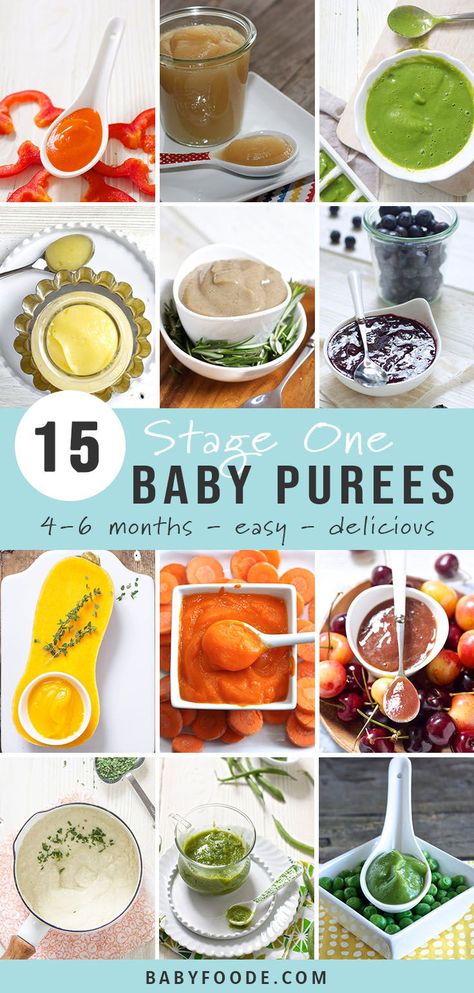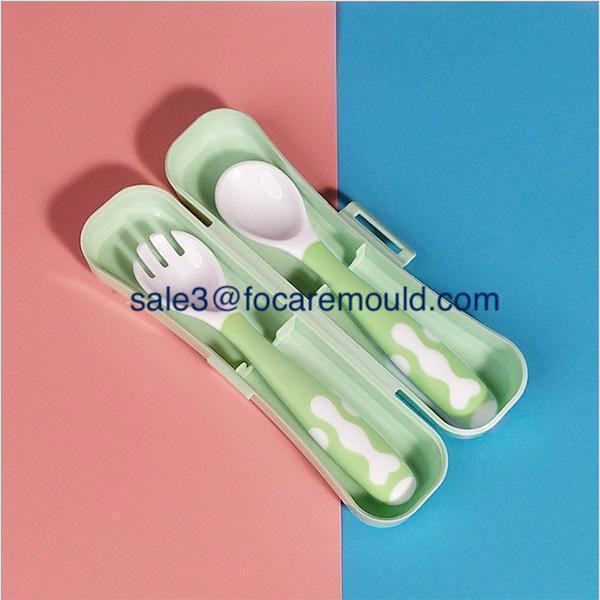Baby food recipes for 7-8 month old
10 Easy Homemade Baby Food Ideas (No-Cook, Super Fast, Stage 1)
Learn how to make the EASIEST homemade baby food recipes (stage 1) for your little one with these super simple no-cook ideas. Plus: I have the best tips for making them ahead and freezing them so you can batch cook and simplify your days!
Homemade Baby Food
As a mom to three kids, I know firsthand how the urge to make homemade baby food can be both exciting and a little daunting. And if you have a busy schedule or other kids in the house, finding the time to actually do it can seem impossible. But, there are so many healthy foods that you can transform into stage 1 baby food purees with hardly any work or special equipment at all!
TIP: I use a regular blender for all of these recipes, so you don’t need to buy a special baby food maker unless you want to.
Baby Food Recipes for 6, 7, and 8 Month Old Babies
These homemade baby food ideas are designed for younger babies who are still eating thinner purees, but you can of course use them for older babies and toddlers too. Each can be served as is, or you can combine more than one together to create new flavors if you’re feeling creative!
TIP: If you want to add fat or protein to any of these fruit or veggie purees, simply stir in a little whole milk yogurt, coconut cream, or Avocado Puree.
Best Way to Make Baby Food
I’ve found that the easiest and most approachable way to make baby food is to simply use a blender. With fresh ingredients and a little water, breastmilk, or formula to thin it as needed, you can easily make your baby meals without investing in equipment you may not use very long.
TIP: You’ll want to start with at least 1 cup of any base ingredient to ensure that there’s enough in the blender to fully blend up.
Tools You Need to Make Homemade Baby Food
To make these baby food recipes you’ll need:
- Blender (you could also use an immersion blender if yours is very strong)
- Water, formula, or breastmilk to thin as needed
- Knife for chopping produce
- Spoon
- Bowls
- Ice cube tray
- Freezer bags for storage
- Baby food storage containers
Stage 1 Baby Food
These baby foods are meant for early eaters as they are typically very thin and easy for a baby to move around in their mouths.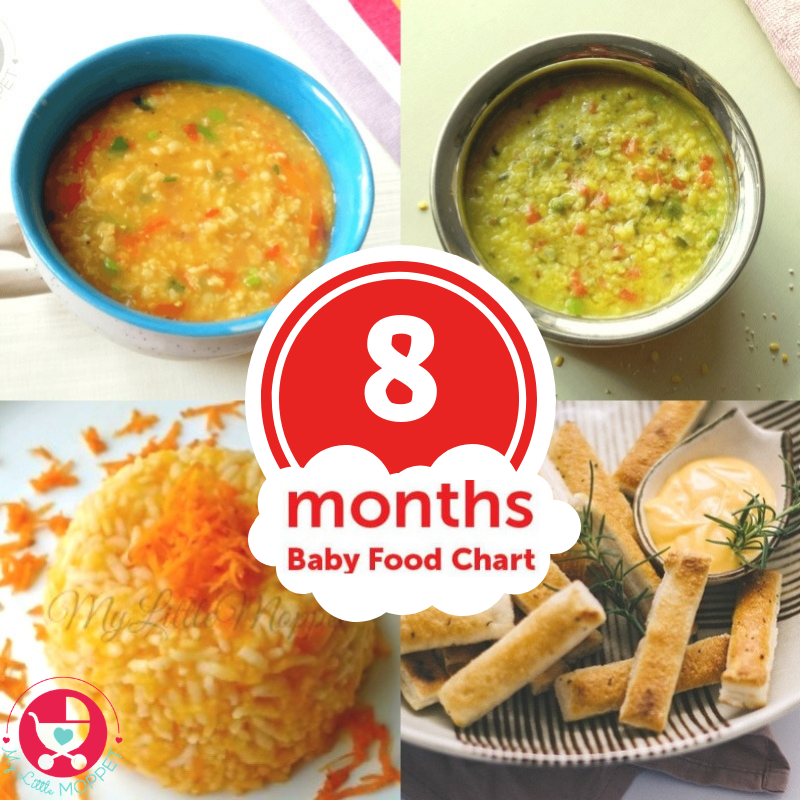 I follow the recommendations to wait until 6 months to start solids, so I personally don’t worry excessively about this distinction as I like babies to experience some texture in their purees. (The ones you find at the store are low allergenic foods and are meant for 4+ months.)
I follow the recommendations to wait until 6 months to start solids, so I personally don’t worry excessively about this distinction as I like babies to experience some texture in their purees. (The ones you find at the store are low allergenic foods and are meant for 4+ months.)
Stage 2 Baby Food
These baby foods are typically a little bit thicker, sometimes include more than one ingredient, and offer a wider variety of ingredients. Most babies are ready for these sorts of purees around 7-8 months, or once they’ve mastered thinner purees. (Again, since I like to do a combined baby feeding approach with both baby led weaning and purees, I don’t worry too much about following the calendar to decide when to introduce these.)
TIP: As a backup to my homemade baby foods, I love the options from Amara Organic Baby Food (paid affiliate link) since you simply need to stir it together with breast milk, formula, or water and it’s ready to serve.
And now, for my ten go-to homemade baby food purees that you don’t even need to cook!
1.
 Avocado Puree
Avocado PureeTo make avocado puree for a baby, you just need a fresh avocado, a blender, and some lemon juice if you plan to store it for later. I sometimes even do this with just a fork if the avocado is super soft! It’s a perfect way to introduce a low allergenic food that’s rich in healthy fats.
TIP: Get the full recipe for Avocado Puree here.
2. Bean Puree
Baby’s early foods don’t have to be all one food group and beans are a great food to have in the mix. You can do this easy bean puree with chickpeas, pinto beans, black beans, or even white beans, thinning it as needed with water, formula, or breastmilk. This is a great puree to mix with a little sweet potato or butternut squash.
TIP: Get the full recipe for Bean Puree here.
3. Blueberry Puree
Using fresh or frozen blueberries, this easy berry puree is loaded with fresh flavor and antioxidants. It’s delicious on its own or stirred into plain whole milk yogurt or baby oatmeal. (Note that it thickens up as it sits in the fridge, so you’ll need to stir it well to serve.)
(Note that it thickens up as it sits in the fridge, so you’ll need to stir it well to serve.)
TIP: Get the full recipe for Blueberry Puree here.
4. Kiwi Puree
With a bright flavor, this puree is great for babies who seem to love flavor—and it’s a fun one to make and store for later. You’ll want to make sure that you choose very ripe and sweet kiwi and taste it before you make the puree to ensure that it’s not too tart. (If it seems tart, you can mix with banana or applesauce.)
TIP: Get the full recipe for Kiwi Puree here.
5. Mango Puree
Using fresh or thawed frozen mango, this baby puree blends up in seconds. It’s bright, flavorful, and a great source of immune-boosting vitamins. Taste your mango to be sure that it’s sweet and not too tart. (If it’s tart, you can add Applesauce or ripe Banana Puree.)
TIP: Get the full recipe for Mango Puree here.
6. Peach Puree
Turn fresh or frozen and thawed peach slices into a super smooth Stage 1 baby food with this easy blender method. You’ll want to strain out the skin since it’s hard to blend up smooth, even with a high powered blender, but that’s so easy to do! This baby food recipe is a nice alternative to applesauce.
You’ll want to strain out the skin since it’s hard to blend up smooth, even with a high powered blender, but that’s so easy to do! This baby food recipe is a nice alternative to applesauce.
TIP: Get the full recipe for Peach Puree here.
7. Whipped Peanut Butter
This may not have occurred to you, but whipped peanut butter is a great baby food! This is a perfect way to introduce baby to peanut butter and to offer it safely there after. You just need to stir water into unsweetened creamy peanut butter until it forms a whipped consistency like yogurt. It’s smooth, not too sticky, and packed with protein.
TIP: Get the full scoop on introducing peanuts to baby here.
8. Pineapple Puree
Blend up fresh or frozen pineapple chunks into a tropical baby food puree that’s smooth and creamy. This is yummy on its own or paired with whole milk plain yogurt. Taste your pineapple to ensure that it’s not too tart. (If it’s tart, you can add Applesauce or ripe Banana Puree. )
)
TIP: Get the full recipe for Pineapple Puree here.
9. Strawberry Puree
Fresh strawberries blend up into a perfectly smooth homemade puree without the need for any additional liquid. You can serve this as is, or mix with applesauce if desired. The flavor of your berries will determine the flavor of your puree, so be sure to taste them for sweetness.
TIP: Get the full recipe for Strawberry Puree here.
10. Banana Puree
Ripe bananas make great homemade baby food with the help of just a blender. This is a super simple baby food to make at home and it’s easy to digest as a Stage 1 baby food. Use ripe bananas with brown spots to ensure that the puree tastes sweet and is easy for baby to digest.
TIP: Get the full recipe for Banana Puree here.
Homemade Baby Food Storage
The easiest way to store homemade baby food is to add fresh purees to an ice cube tray and freeze. Once frozen, simply pop out the cubes and store in labeled freezer bags for up to 3 months. These are a perfect way to make it easy to send homemade baby food to daycare or to simply get ahead for the coming week.
Once frozen, simply pop out the cubes and store in labeled freezer bags for up to 3 months. These are a perfect way to make it easy to send homemade baby food to daycare or to simply get ahead for the coming week.
TIP: Find more information about storing baby food—including the best small food storage containers—here.
]
Tips for Making the Best Homemade Baby Food
- Use at least 1 cup base ingredient to ensure that a blender has enough volume to blend well.
- Thin any homemade puree with water, formula, or breast milk.
- Freeze any baby food you won’t use within 3 days in an ice cube tray. Transfer frozen cubes into freezer storage bags for up to 3 months. Thaw these frozen baby food recipes in an airtight container in the fridge overnight before you plan to serve.
- Taste all fresh foods for sweetness and to ensure that your puree isn’t too tart. To tame tartness, mix any puree with Banana Puree , Avocado Puree, Applesauce, or Mashed Sweet Potato.
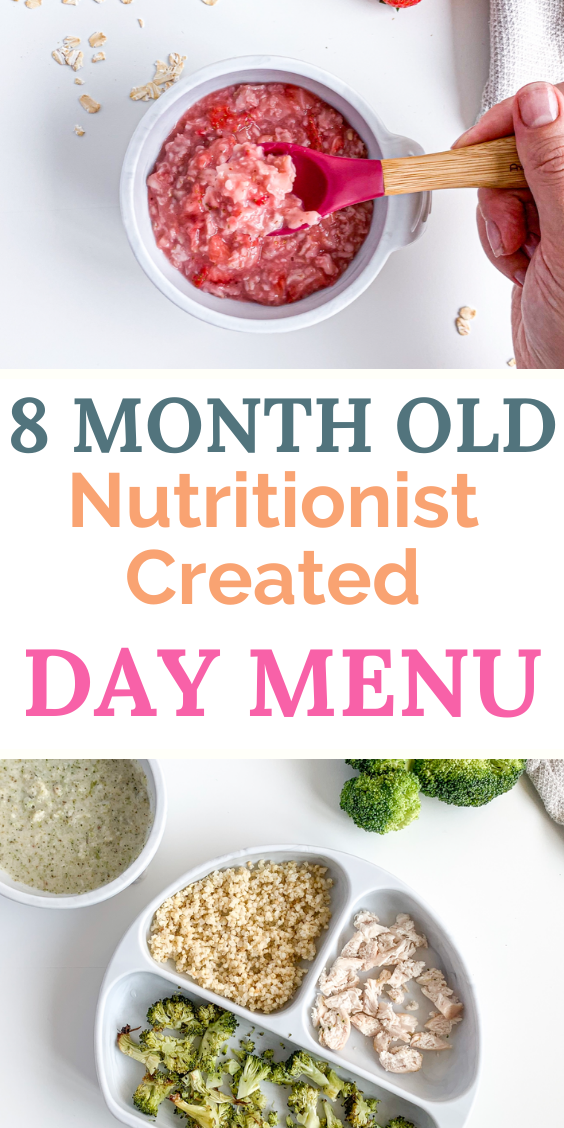
- If you want to add fat or protein to any of these fruit or veggie purees, simply stir in a little whole milk yogurt, coconut cream, or Avocado Puree.
- Use breastmilk or formula in place of the water if desired.
- Mix two purees together for more complex flavors.
- Add texture to any puree by stirring in baby oatmeal or hemp seeds.
- For more details on each of these, find them here: Avocado Puree; Banana Puree, Bean Puree; Blueberry Puree, Kiwi Puree, Mango Puree, Pineapple Puree, Peanut Butter Puree, Peach Puree, Strawberry Puree
I’d love to hear your feedback on this way of making simple baby food, so please comment below. I so appreciate hearing your experience with my recipes!
Prep Time 5 minutes
Cook Time 0 minutes
Total Time 5 minutes
Author Amy Palanjian
Cuisine American
Course Baby Food
Calories 42kcal
Servings 4
- ▢ 1 cup blueberries, diced strawberries, diced peaches (peeled), diced kiwi (peeled), diced pineapple (peeled), diced banana (peeled), diced mango (peeled), diced avocado (peeled), OR beans (rinsed and drained)
- ▢ water, formula, or breast milk (as needed)
Choose one fruit, the avocado, or beans and add to a blender.
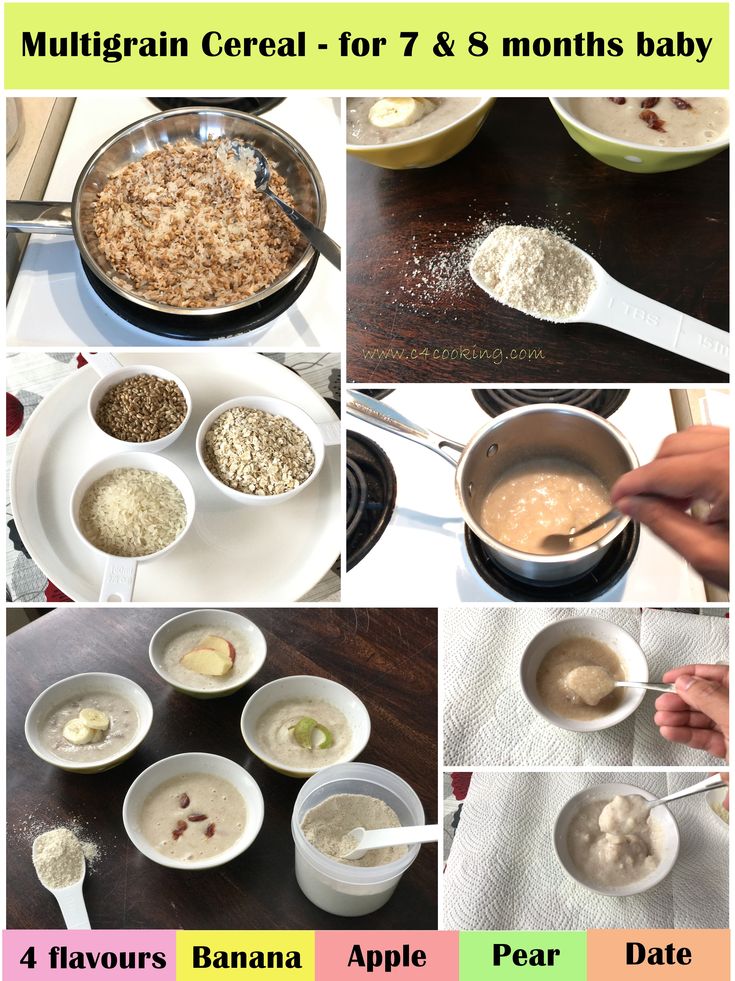
If making the puree with blueberries, strawberries, peaches, kiwi, pineapple, mango, or beans, add ¼ cup water and blend, adding more water as desired to make a thin, very smooth puree. If making avocado or banana, just blend (without water) until very smooth.
Serve or store in an airtight container for 3-5 days in the fridge, or up to 3 months in the freezer.
Vitamix Blender
Storage Containers
Silicone Ice Cube Tray
- Use at least 1 cup base ingredient to ensure that a blender has enough volume to blend well.
- Thin any homemade puree with water, formula, or breast milk.
- Freeze any baby food you won't use within 3 days in an ice cube tray. Transfer frozen cubes into freezer storage bags for up to 3 months. Thaw these frozen baby food recipes in an airtight container in the fridge overnight before you plan to serve.
- Taste all fresh foods for sweetness and to ensure that your puree isn't too tart.
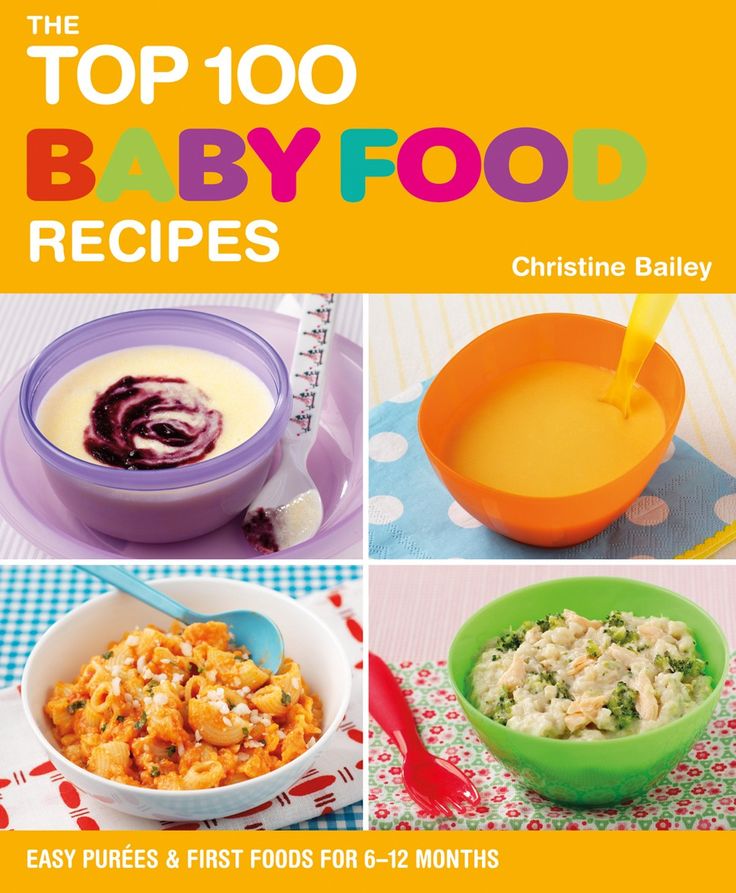 To tame tartness, mix any puree with Banana Puree , Avocado Puree, Applesauce, or Mashed Sweet Potato.
To tame tartness, mix any puree with Banana Puree , Avocado Puree, Applesauce, or Mashed Sweet Potato. - If you want to add fat or protein to any of these fruit or veggie purees, simply stir in a little whole milk yogurt, coconut cream, or Avocado Puree.
- Use breastmilk or formula in place of the water if desired.
- Mix two purees together for more complex flavors.
- Add texture to any puree by stirring in baby oatmeal or hemp seeds.
- For more details on each of these, find them here: Avocado Puree; Banana Puree, Bean Puree; Blueberry Puree, Kiwi Puree, Mango Puree, Pineapple Puree, Peanut Butter Puree, Peach Puree, Strawberry Puree
Serving: 0.25cup, Calories: 42kcal, Carbohydrates: 11g, Protein: 1g, Fat: 1g, Saturated Fat: 1g, Polyunsaturated Fat: 1g, Monounsaturated Fat: 1g, Sodium: 1mg, Potassium: 57mg, Fiber: 2g, Sugar: 7g, Vitamin A: 40IU, Vitamin C: 7mg, Calcium: 4mg, Iron: 1mg
Tried this recipe?Rate in the comments and tag @yummytoddlerfood on IG!
Tips on Freezing and Best Containers
Learn the secrets to storing and freezing homemade baby food for ultimate freshness—AND the best baby food storage containers to use to ensure that you never waste what you make!
Baby Food Storage
Going through the effort to make homemade baby food really only works if you have a good plan for how to store the food to ensure that it stays fresh and that baby has plenty of opportunities to enjoy it.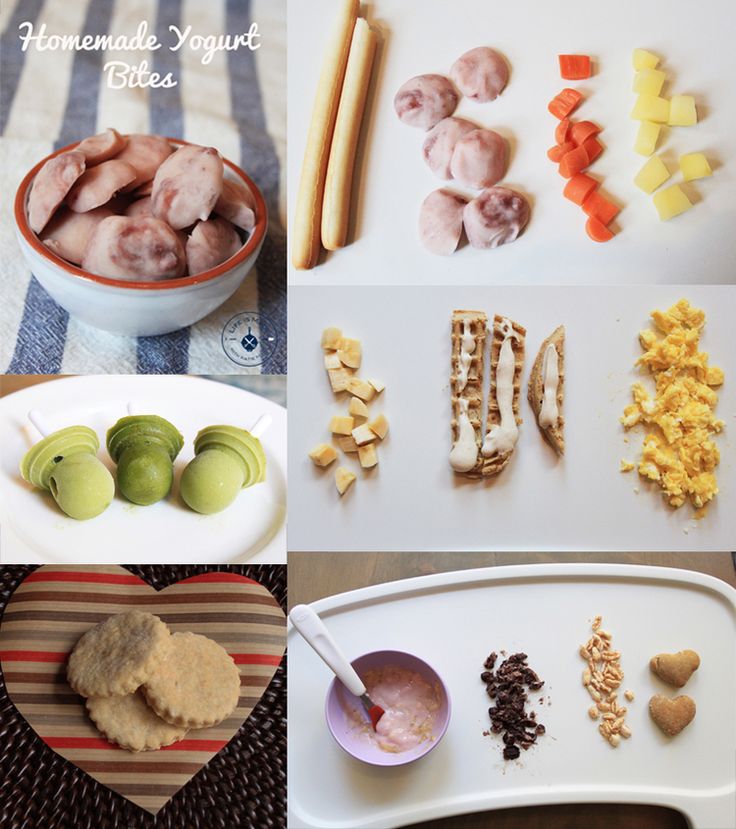 After making a LOT of baby food for my third kiddo to send with him to daycare, I got into a good routine of making and storing baby food—both in the fridge and freezer. Here’s how you can do it too.
After making a LOT of baby food for my third kiddo to send with him to daycare, I got into a good routine of making and storing baby food—both in the fridge and freezer. Here’s how you can do it too.
TIP: You can find my favorite baby food recipes here.
Homemade Baby Food Storage: In the Fridge
You can store baby food in the fridge in airtight containers for up to 3 days. You can use masking tape and a Sharpie to label the containers with the contents and the date if you have a hard time keeping track of when you made something. (It’s definitely helpful to do that!)
Best Baby Food Storage Containers
I have a four favorite baby food storage containers that I use regularly.
1. Wean Green Baby Food Cubes
These are small, incredibly durable, and made from glass. They’re easy to clean and last forever. (Seriously, I’ve been using the same set for 7 years and they’re still as good as new!) $19.99 for a set of 4
2.
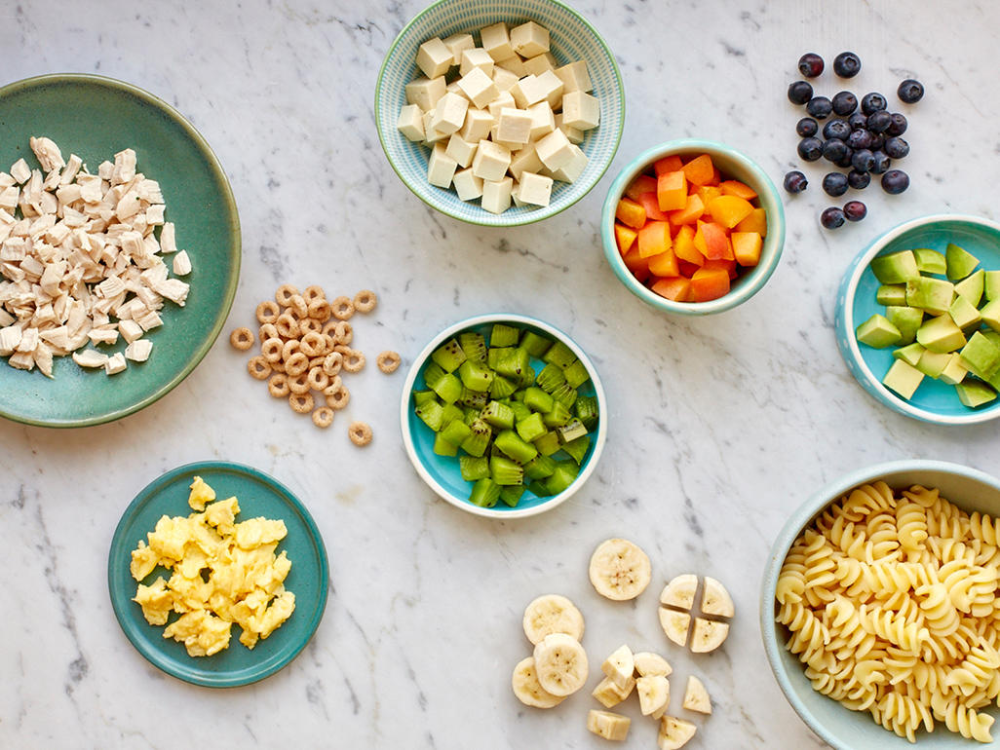 Easy Lunchboxes Mini Dippers
Easy Lunchboxes Mini DippersThese small containers are a perfect size for 1-2 frozen baby food cubes and they’re my go to for packing food for a baby to take to daycare. They also nest nicely when stored in the cabinet. $7.95 for a set of 8
3. Beaba Food Storage Containers
I have two sets of these and I use them regularly for larger amounts of baby food (you could probably fit 4 cubes of frozen food) and for toddler snacks. When assembled, they snap together, so they’re an easy way to stay organized. $14.95 for a set of 6
4. Oxo Tot Baby Food Blocks
This neat system is easy to keep contained in the fridge and is also made from a polypropylene body that is PVC, BPA, and phthalate free. They are dishwasher and microwave safe. $9.99 for a set of 6
Homemade Baby Food Storage: For Freezing
Storing homemade baby food in the freezer allows you to make a bigger batch at once, and then serve it to baby over the course of a few weeks or months.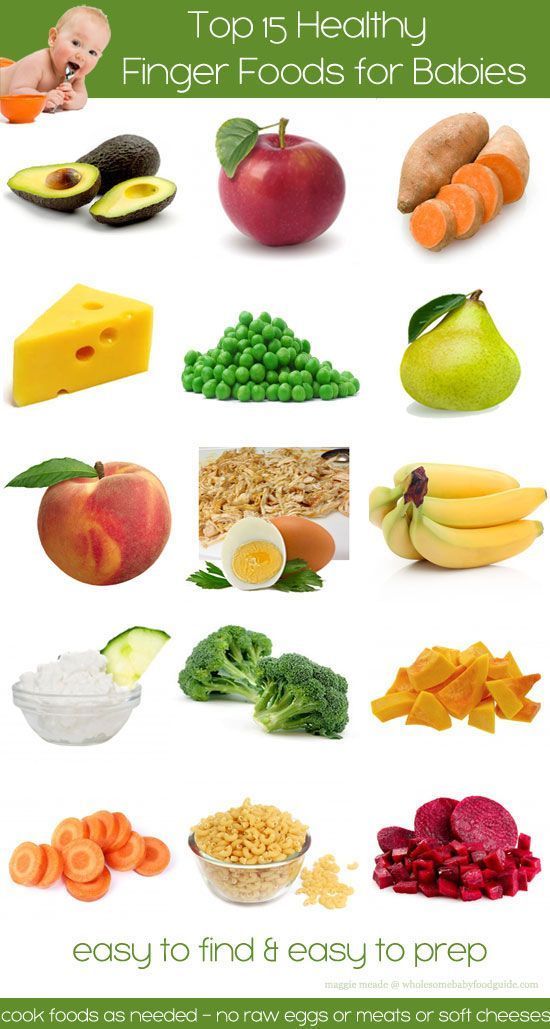 The easiest way is to use an ice cube tray, which has the added benefit of portioning out the baby food nicely.
The easiest way is to use an ice cube tray, which has the added benefit of portioning out the baby food nicely.
TIP: Any ice cube tray will do. You can use silicone ice cube trays if you prefer a non-plastic option.
Baby Food Storage Without An Ice Cube Tray
If you don’t have an ice cube tray or you’d just rather not use one, you can place a predetermined amount of baby food into a pint-size freezer bag. Remove as much air as possible, press flat, and seal. Place flat in the freezer to freeze. Then you can thaw the entire bag in the fridge overnight, or break off a portion of it to thaw.
How to Store Baby Food in the Freezer Step by Step
- Place baby food into each compartment of the ice cube tray, or fill as many as you need to with the amount of baby food you have.
- Cover (if your ice cube tray has a cover) and freezer for 4-6 hours or overnight.
- Pop out frozen cubes and transfer to freezer storage bags. Label as desired with the type of baby food and the date.

- Store in the freezer for up to 3 months.
TIP: I like to have a bag of sweet fruit purees and more savory vegetable purees to avoid having too many separate bags in the freezer at any given time. Then you can combine them into baby food combinations easily!
How to Thaw Baby Food
To thaw baby food, simply remove a cube (or as many as you need) and place into airtight containers. Thaw overnight in the fridge and serve. 1 cube may be plenty for a baby aged 6-7 months and older babies may enjoy two cubes.
Tips for the Best Baby Food Storage
- Keep fresh baby food in an airtight container for up to 3 days in the fridge.
- Use a regular ice cube tray to freeze, a silicone ice cube tray with a lid, or a small freezer bag with the contents pressed flat.
- Store frozen baby food in a freezer storage bag in the freezer for up to 3 months.
- To avoid freezer burn, try to remove as much air as possible from the storage bags.

- Label your bags with the contents and the date.
- To thaw baby food, simply remove a cube (or as many as you need) and place into airtight containers. Thaw overnight in the fridge.
- Use leftover baby food to flavor yogurt, baby oatmeal, baby rice cereal, smoothies, or cottage cheese.
- See some of my favorite Baby Food Pouch recipes here for more ideas on how to serve your baby food!
I’d love to hear your feedback if you have another storage technique or container that you love, so please comment below!
Recipes for an 8 month old baby ~
A baby at 8 months old is no longer a beginner in complementary foods (read - “Complementary foods for a baby at 8 months”), he has already tried something, something he has yet to try. The menu for a child at 8 months already includes more products than complementary foods for a 5-month-old baby, for example. Here soups and porridges, mashed potatoes and second courses.
So, what can you cook for an 8 month old baby?
Here are some recipes for an 8 month old baby.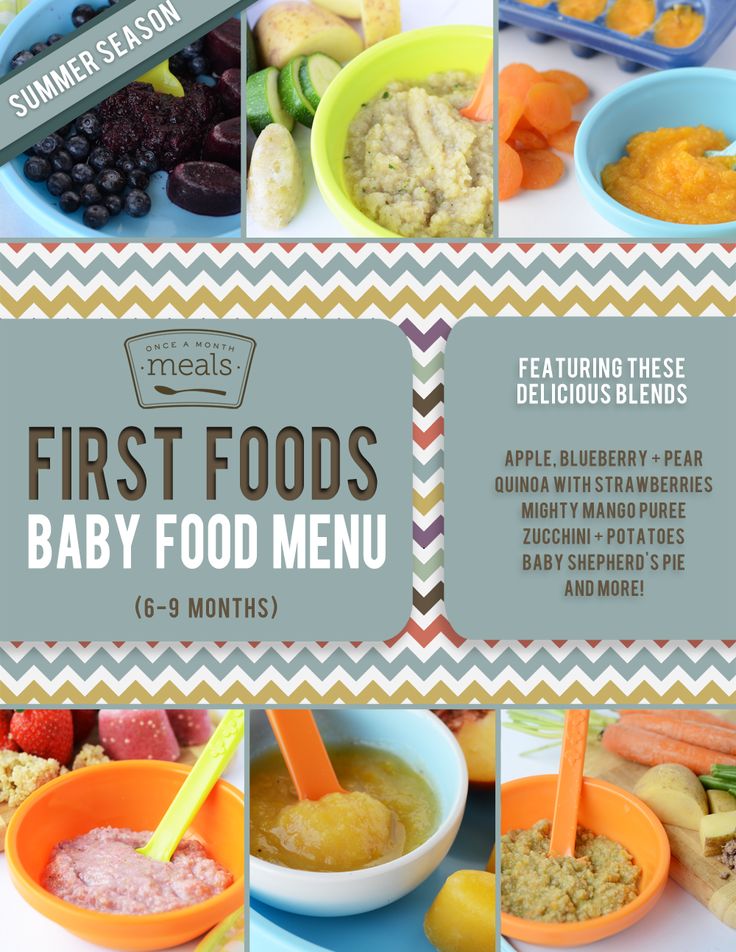
Vegetable puree with veal
Soup with meatballs
Pear with cottage cheese
buckwheat with prunes
Fish with vegetables
compote of dried fruits
Puree soup with chicken and vegetables
porridge
9000 steamed fish cutletsTurkey meat mousse
Zucchini and cauliflower puree with herbs
Vegetable puree with veal
- One medium sized potato.
- Veal - about 70g.
- Quarter of an onion for 70 g of veal.
- The same amount of pumpkin.
The meat should simmer on low heat from the moment of boiling for another hour and a half. Cut the vegetables and add to the meat, when everything is ready, send to a blender and puree. Puree for an 8 month old baby is ready.
Meatball soup
Lunch for an 8 month old baby.
You will need:
- turkey fillet approx. 100 g.
- 30 g rice.

- One medium-sized potato,
- 1/4 onion or very small onion,
- 50 g cauliflower.
The turkey must first be minced. Add half-cooked rice to the minced meat and form small meatballs. Throw them into boiling soup water and cook for about 10 minutes. Potatoes, cut into small cubes, along with cabbage, add to the meatballs and cook for another 10 minutes. nine0003
This is the way to cook soup for an 8 month old baby!
Read - Turkey in baby food.
Pear with cottage cheese
Peel a soft pear, remove the core and put it in a blender, add 50 g of cottage cheese to it. Puree. Ready.
Read - pear in complementary foods.
Buckwheat porridge with prunes
Porridge for an 8-month-old baby should be on the menu, because it is an excellent source of the maximum amount of nutrients. So, the recipe for porridge for feeding with pears and prunes. nine0003
Ingredients:
- 100 g buckwheat.
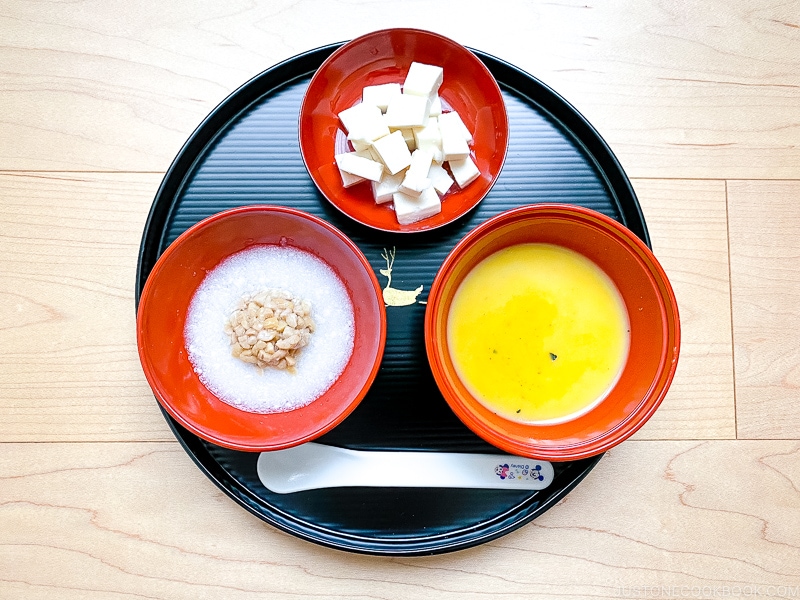
- 200 g water.
- 30 g prunes.
- 5 g butter.
Boil the porridge until tender, then chop with a blender, adding prunes and a little oil.
A simple porridge recipe for an 8 month old baby!
Read - buckwheat in baby food.
Recipes for an 8-month-old baby: fish puree with vegetables
Ingredients:
- A small piece of hake, about 70 g.
- 50 g cauliflower florets.
- each 30 g carrots and peas.
Cook the fish after boiling for another 10 minutes. Remove the fish from the saucepan and boil the vegetables in the broth. Add peas and / or dill at the very end. To puree, grind everything in a blender.
Dried fruit compote
- 4 dried apricots
- 30 g prunes and raisins.
Throw the fruits into boiling water, then cook for another 5-7 minutes and finally leave the compote to infuse. nine0003
Puree soup with chicken and vegetables
Recipes from 8 months of course include vegetables and meat.
- 200 g chicken
- 100 g cauliflower,
- carrots,
- one-third of an onion,
- tablespoon of rice and some dill.
Cut the chicken into small pieces and put in water (can be from the tap, about a liter). Boil and drain the water, then add fresh boiling water and salt. Cook until done. Remove the meat, add rice to the broth and cook for 10 minutes. Add chopped vegetables and cook for another 5 minutes. In the finished soup, return the meat and add the dill. Give soup no more than 150 g per serving. nine0003
This soup is full of nutrients, but also very tasty and rich, try this soup recipe for an 8 month old baby!
Read - Chicken on the baby's menu.
Rice porridge with berries
- 100 ml. milk,
- 100 ml. water,
- a couple of tablespoons of rice
- 30g. berries.
How to cook porridge for a child at 8 months?
Place milk mixed with water over medium heat.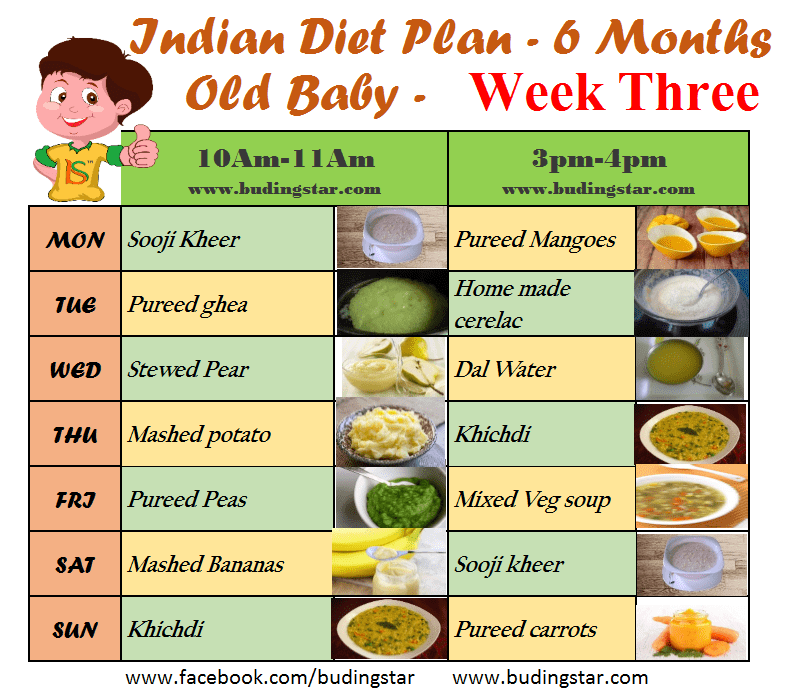 Add cereal, stir until it boils, reduce heat and cook for another 10 minutes. Pour boiling water over the berries and add to the porridge. Make a puree with a blender. nine0003
Add cereal, stir until it boils, reduce heat and cook for another 10 minutes. Pour boiling water over the berries and add to the porridge. Make a puree with a blender. nine0003
Buckwheat porridge for complementary foods
A baby who eats porridge at 8 months should periodically receive porridge from buckwheat, because it has so many benefits.
- 3 st. spoons of buckwheat,
- glass of water
Pour buckwheat into water, cook over low heat for at least 15 minutes, counting from the moment of boiling. Add some butter.
This is a simple recipe for buckwheat porridge for an 8 month old baby.
Children's steamed fish cutlets
When choosing fish fillets, make sure that there are no bones, even the smallest ones.
You will need:
- a pound of pollock fillet,
- white bread 60 g.
- 70 ml. milk,
- 1 egg
- A couple tablespoons of butter.
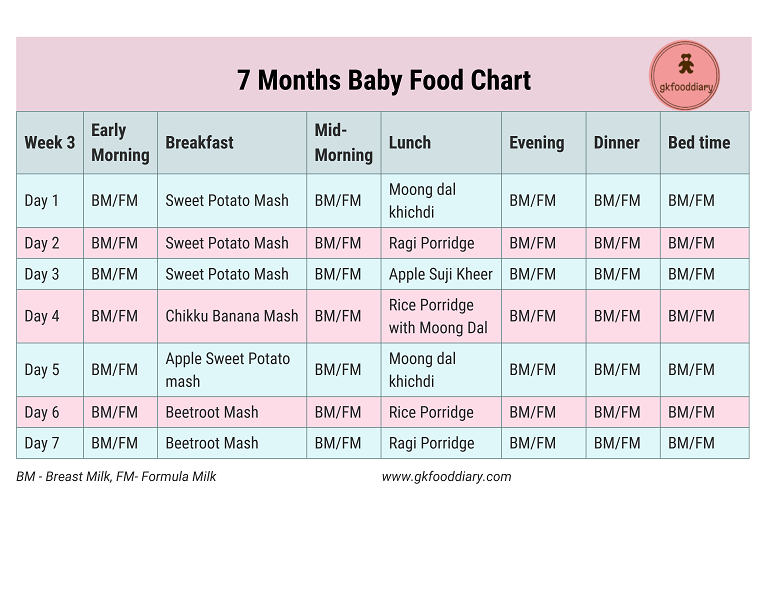
Pass the fillet cut into pieces twice through a meat grinder, soak the bread in milk and add to the minced meat along with the egg. Shape into patties and place them on a pre-oiled wire rack. Steam for about 20-25 minutes. Steam cutlets with carrot puree are especially tasty. nine0003
Turkey meat mousse
Suitable as lunch for an 8 month old baby.
Ingredients:
- 100 g turkey fillet,
- half a glass of water.
First you need to cook the meat and it is better to do it in a double boiler. Steam the meat for about 40 minutes.
Cut the finished meat into cubes and then grind with a blender until you get a mousse.
Delicate and tasty mousse is sure to please the baby, so you can safely take this recipe from turkey in the menu for baby food. nine0003
Read - meat is on the children's menu.
Zucchini and Cauliflower Puree with Herbs
If you are looking for puree recipes for an 8 month old baby, this one is one of the first to try.
Dice 150 g courgettes and the same amount of cauliflower.
Steam until soft, covered or in a double boiler. At the end, beat with a mixer.
We hope you will take note of some of these dishes as a menu for your child. Read our other recipes in the section. nine0003
Feeding a 7-month-old baby, recipes and tips for feeding your baby
Feeding your baby At 7 months, it's not that hard: "There is no greater blessing in life than watching your baby grow." Time passes quickly. Your newborn baby is growing and his nutritional needs are changing. Experts recommend Breastfeeding Exclusively for the first six months as ideal nutrition for a baby.
Baby feeding at 7 months, recipes and tips for feeding babyOnce you've overcome this limit, it's time to introduce solid foods into your breastfeeding baby's diet for healthy growth and development.
You need: child adjustment, developing children's ability to adapt and adapt to new situations
What food is suitable for feeding a baby at 7 months of age?
Before making a feeding plan for your 7-month-old baby, it's important to check with your pediatrician if your baby is ready to go on a solid diet. One of the common indicators of a developed digestive system is a doubling of a baby's weight at birth. nine0003
One of the common indicators of a developed digestive system is a doubling of a baby's weight at birth. nine0003
Your child will also show you that he is ready by opening his mouth when introducing food. the ability to sit upright, keep your head unaided, and swallow easily are some of the tips to pay attention to when preparing. You need to make sure that the food offered to your 7-month-old baby is soft on his gums and well mashed up to make it easier for him to swallow.
Start with small portions and work on the amount of solid food in your daily diet. Start with soft, juicy foods. nine0003
Some foods to give to a 7 month old baby:
- Fruits/Vegetables Small portions of pureed fruits such as apples, pears, bananas and avocados.
- Cooked and pureed vegetables such as potatoes, carrots, zucchini, broccoli and squash.
- Soup with small pieces of peas, tomatoes, spinach and broccoli.
- Shredded chicken pieces, before introducing fish or eggs, consult a physician to avoid allergic reactions.
 nine0042
nine0042 - Porridge made from rice, lentils and vegetables.
- Whole grain oats and cereals.
- Puree of legumes such as chickpeas and beans.
- Infant formula mixed with infant formula or breast milk.
- Tofu and other protein-rich foods.
You can cook, steam or cook food. Frying and grilling should be avoided. Buy a steamer to make cooking easier.
You need: Learning at home: expert advice on teaching children during isolation at home
How much milk is suitable for feeding a 7-month-old baby?
The transition from infant formula or breast milk to solid food will take some time. You will have to start with small pieces and gradually increase the size of the pieces and portions of solid food.
Feeding your 7 month old baby, recipes and tips for feeding your baby As you increase your intake of solid foods, you can gradually reduce the amount of milk. On average, a 7-month-old baby needs 8 to 12 tablespoons of solid food and 3 to 5 servings of infant formula or breast milk.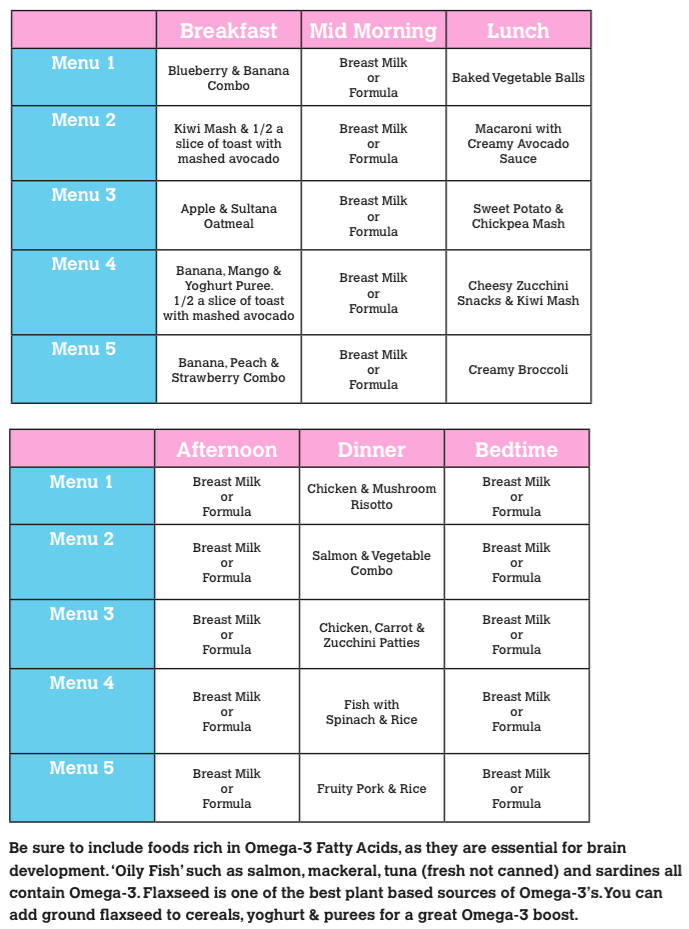 When solid foods are included in the diet, the baby will have a full tummy and he will sleep well all night. nine0003
When solid foods are included in the diet, the baby will have a full tummy and he will sleep well all night. nine0003
There will be less dependence on the mother as solid food can be prepared by the caregiver or family member. This may be helpful for a working mother.
Foods to avoid for a 7 month old baby
Takes Digestive The baby has time to grow up. There are some foods to avoid:
- Cow's milk is not easily digested and can cause allergic reactions. Honey can lead to infant botulism, which can be fatal, so it should be avoided. nine0042
- Nuts should be avoided as they cause allergies and a risk of choking.
- Citrus fruits should be avoided.
- Small foods such as grapes may present a choking hazard.
- Eggs and fish can cause an allergic reaction and are recommended to be introduced a little later.
- Processed food is unhealthy and can cause stomach upset.
- Oil should be avoided or used sparingly.

- Avoid salt and sugar until the child is one year old. nine0042
You should keep an eye on new products and check for allergies. Don't offer multiple foods at once and allow a one-week break between new foods to develop taste and understand your child's preferences.
Complementary Food Recipes for 7 Months Baby
Here are some interesting options for 7 month old baby food recipes. Incorporate these healthy lunch options and dinner recipes into your meal plan as your first meal of the day. nine0003 Feeding your 7 month old baby, recipes and tips for feeding your baby
Introduce vegetables, fruits and grains into your baby's diet in a fun way. For non-meat eaters, there are other protein options in the form of tofu and sprouts.
You Need: Sore Throat in Babies, Causes, Symptoms, Prevention and Treatment
1. Roasted Carrot and Spinach Puree for 7 Months Baby Feeding
This simple recipe is rich in vital vitamins and nutrients. Grilled vegetables add extra flavor to perk up baby's taste buds. This recipe is suitable for freezing. nine0003
Grilled vegetables add extra flavor to perk up baby's taste buds. This recipe is suitable for freezing. nine0003
ingredients :
- 2 medium carrots, washed, peeled and cut into strips.
- 1 cup spinach, washed and dried.
how to prepare :
- Wrap carrots and spinach in aluminum foil.
- Put the ingredients on a baking sheet and bake at 190 degrees for 30 minutes.
- Alternatively, you can put it on an open fire and cook until the carrots are soft.
- Cool and mix vegetables in a meat grinder. Add breast milk or formula with a little water. nine0042
What you need: the right car seat for your baby, what to avoid and what to do
2. Apple and cinnamon for baby food at 7 months.
Porridge is ideal as a first food for children. They are naturally sweet and full of nutrients. Applesauce can be stored in the freezer and used as needed.
Ingredients:
- 1 apple, peeled, cored and chopped.

- A quarter cup of water. nine0042
- 1 glass of milk.
- 3 tablespoons small oats.
- Cinnamon powder.
how to prepare :
- Put the apples in a pot of water over the heat until they are soft.
- Cook oatmeal and milk in another saucepan and bring to a boil.
- Stir ingredients occasionally.
- Crush apples and mix with porridge.
- Sprinkle cinnamon on top and serve hot. nine0042
3. Chicken and vegetable puree.
The perfect way to introduce non-vegetarian food into your child's diet.
Ingredients:
- 1 cup minced chicken.
- 1 carrot, peeled and finely chopped.
- 1 sweet potato, peeled and chopped.
- 25 grams grated cheese, preferably cheddar.
- 1 pinch dried thyme.
how to prepare :
- Put the vegetables in a pot of water over the fire until it boils and is done.


